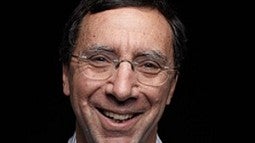Not too long ago, the word “media” referred to defined communication channels, such as newspapers, film, radio and television. Content was created by defined roles of reporter, director, disc jockey and broadcaster.
But as new technologies have created more systems of social transmission and opened access to a wider populace, the concept of media is no longer so neatly defined.
This emerging landscape and the latest research on the topic is the focus of the “What is Media?” Conference-Experience April 14-16 in Portland

“We are bringing together interdisciplinary researchers to explore and unpack the idea of media. How has it been defined? How has it evolved? How is it being studied from different approaches?” said Janet Wasko, UO professor and Knight Chair in Communications Research, and co-director of the conference with doctoral candidate Jeremy Swartz. “Boundaries are blurring across media and its definition is erupting. Faculty and graduate students will come together to share research and find new possibilities for collaboration.”
This year’s conference will kick off Thursday, April 14, at the White Stag Block in Portland with a roundtable discussion on the Freedom of Information Act and the 2016 Johnston Lecture. John Markoff, a journalist with The New York Times, will talk about “Three Reporting Cultures: Designing Humans In and Out of the Future of Journalism.”
The grand opening of the exhibition “HABITATS” follows in the Light Court Commons. The show features pieces that “use various techniques and platforms to explore and envision ‘spaces, places and traces’ of what media have been and can become.” It is presented in cooperation with the UO’s Portland library, fabrication lab and the White Box Gallery.
The conference will continue Friday and Saturday at the White Stag Block with a variety of panels and roundtables featuring leading media researchers from around the world. More than 250 regional, national and international researchers and graduate students are expected to participate in six plenary sessions and more than 40 panels.
Topics include information, democracy, the environment, science and technology, organizations and politics, news as ecosystem, gender, automation and augmentation, makers, and biology. The conference concludes with the premiere of a composition by Robert Kyr, UO Knight Professor of Music Composition and Theory.
“Experience: Media, Exploration, Emergence,” a collaboration between the NW Film Center and the UO, will take place Friday evening at the Portland Art Museum. It includes a screening of Lynn Hershman Leeson’s film, “!Women Art Revolution,” which covers 40 years of feminism and art. The event will also integrate dance, music and new media by the Eugene-based collective Harmonic Laboratory.
For an in-depth look at the conference, topics, bios and registration, visit http://whatis.uoregon.edu. A live stream of the conference will be available at Portland.uoregon.edu/live.
—By Heidi Hiaasen, University Communications


